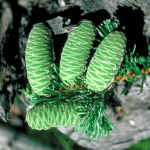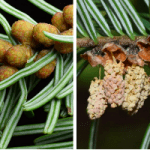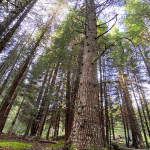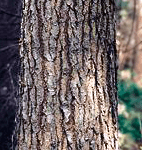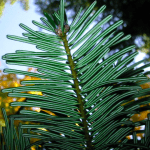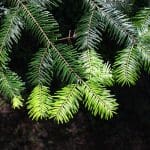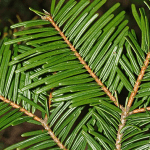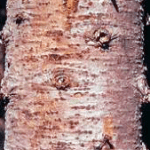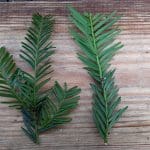Grand Fir / Spring / Summer / Autumn / Winter / Edible
Grand fir is one of the most flavour-packed conifers I’ve ever come across it’s almost like a clementine bubble gum.
Common Name
Grand Fir
Botanical Name
Abies grandis
Scientific Classification
Kingdom: Plantae
Order: Pinales
Family: Pinaceae
Physical Characteristics of Grand Fir
A large tree growing up to 40-70 metres.
Leaves
The needles are flattened, glossy dark green on the top with 2 white bands of stomata underneath with a slightly notched tip.
Flowers
The flowers appear in April. The male flowers are found underneath the leaves with the female flowers, (cones), upright on the stems.
Male flowers before and after release of pollen
Female flowers, (cones), after fertilisation
Seeds
The seeds are contained in large upright cones. The cones are green initially and gradually ripen to brown
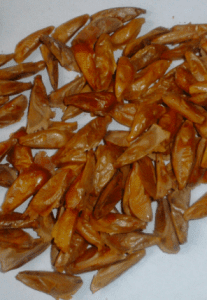
Bark
Grand Fir has smooth greyish-brown bark with white spots and blisters filled with gummy resin when young. The bark becomes furrowed and scaly with age.
Habitat
Grand Fir grows from the north west USA and south west Canada
It is widely planted on estates in Scotland, particularly on the west coast where there is sufficient rainfall. It is also a popular secondary tree planted by Forestry & Land Scotland on commercial plantations and along the edge of motorways as you get further north into Scotland.
Prefers cool humid areas.
Known Hazards
None known
Could Be Confused With
Yew, (Taxus baccata), however, the needles of Yew are a different shade of green. The trunk of Yew is also very different, looking like bundles of trunks in mature trees. The most obvious difference is the lack of fragrance from crushed Yew needles. Grand Fir has an unmistakable smell of grapefruit when the needles are crushed or a branch or twig is broken.
Edible Use
Grand Fir smells very similar to Grapefruit. It certainly has a distinctive citrusy scent. Although the flavour comes from the essential oils within the needles, after a month or so indoors, most of the oils will have evaporated so you’re best collecting outdoors only as you need it.
It’s best to think of the needles as a flavouring rather than a vegetable. You can blitz the needles in a herb or coffee grinder and add them to salt or sugar for use in baking or to flavour soups, meats, stews and casseroles. Use it like you would any other woody herb.
Young tips can be eaten straight from the tree in early spring, if you can reach them, added to salads, cures for meats and fish, tapenades or pestos.
It’s a flavour that works beautifully in desserts and syrups made from the needles are delicious drizzled over ice cream, in smoothies, on porridge, in cocktails or topped with ice cold sparkling water for a refreshing drink. Biscuits, cakes, chocolate are all enhanced by the citrus flavour of this Fir.
It also makes an interesting addition to primitive beer and naturally fermented lemonade mixes, but possibly the simplest way to enjoy Grand Fir is to make a tea with the needles, adding a little honey and a slice of citrus fruit, either Grapefruit, Lemon or Orange.
Notes on Herbal Uses
High in vitamin C, flavonoids and polyphenols, like many other Conifers, Grand Fir is widely used medicinally.
The gummy resin that exudes from the bark is used externally as an ointment. It’s also been used as a wash for sore and infected eyes, (although I would proceed with caution here), and as a gargle for sore throats. A decoction is laxative and tonic and used to treat stomach problems. Externally, the gum is applied as a poultice to cuts and sores and to joints to ease rheumatism or the chest to treat lung problems.
The needles are used to make a tea to treat colds and flu.
Extra Notes From The Forager
Grand Fir was first introduced to the UK in 1830, but it wasn’t until 1852 that it became successfully established.
Abies is derived from the Latin ‘rising one’, and refers to the height of Firs. It was usually used to describe tall trees or ships and grandis means ‘great



